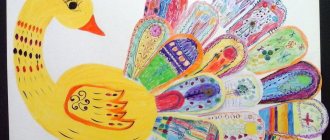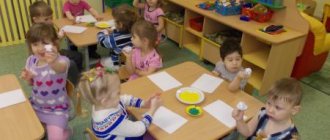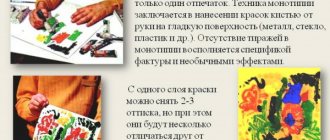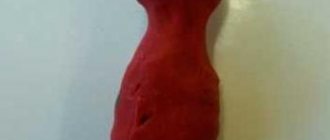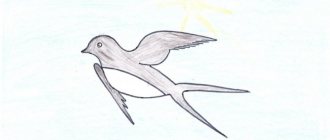Summary of GCD for drawing in the middle group on the topic “Decorating a Sweater”
Nadezhda Ogarkova
Notes on drawing in the middle group on the topic “Decorating a Sweater”
Summary of GCD for drawing in the middle group on the topic : “ Decorating a sweater ”
Program content: Strengthen children's ability to decorate items of clothing using lines, strokes, dots, circles and other familiar elements. Decorate clothes cut out of paper with decorated stripes. Learn to select colors according to the color of the sweater . Develop aesthetic perception, independence, initiative.
Sweaters of different colors cut out of thick paper , gouache, tassels, tassel stands, oilcloths, sippy cups, napkins.
Decorative drawing training
Decorative drawing has its own functional features - it allows you to focus more on those nuances that general drawing cannot always use: free imagination first obeys the clear structure of the pattern, and then learns to create such a structure.
Stages of training
The first steps to get acquainted with decorative drawing are reminiscent of tasks associated with gluing ready-made elements of a composition. Children master the ability to draw straight lines, and between them place dots and strokes alternating in color, shape and size, gradually complicating the pattern combination by adding new elements.
The simplest decorative element in terms of execution technique is a brushstroke, since it does not require precise coordination of movements and is obtained as a result of a light touch on the paper. Therefore, it is advisable to start drawing up decorative patterns with strokes, then connect the dots. Dot painting is based on the vertical movement of the hand and touching the brush only with the tip, and therefore requires more confident and developed motor skills.
The compositional solution of the first works in the decorative genre will consist of an elementary rhythmic reproduction of the same basic element, for example, a circle.
The child masters the first stage of creating a pattern based on the repetition of one element
The next level of complexity is associated with mastering the principle of alternation, since it is based on a combination of several forms. For four-year-old children, it is enough to use two elements, different in shape and color. Gradually, the level of tasks increases due to the introduction of new artistic elements into the pattern and the creation of more complex compositions. Children also actively use the techniques of drawing rounded shapes that they learned at the previous stage of learning.
Photo gallery: “The principle of alternating elements in shape and color” (presentation for the lesson)
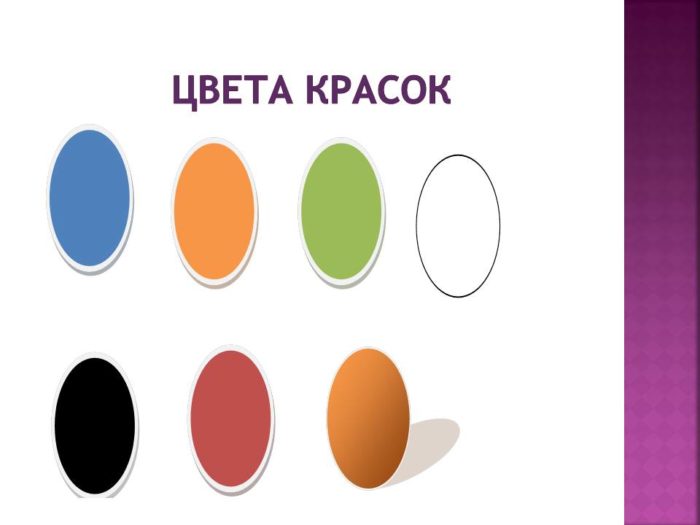
You can start with a limited set of paints
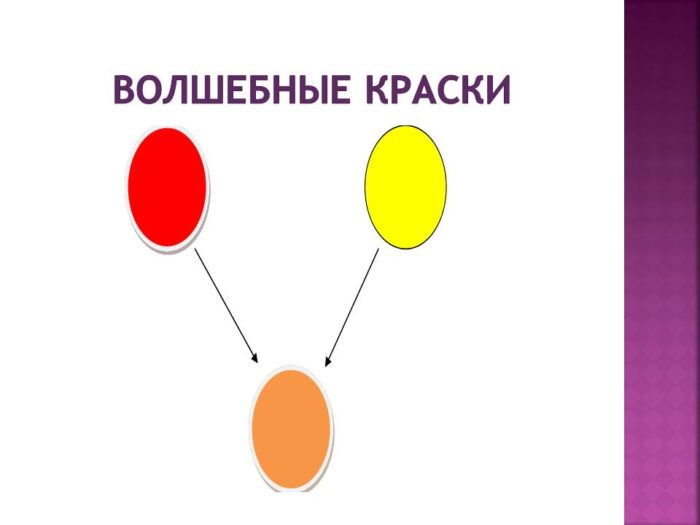
Mixing paints to create new colors is quite interesting.

Humanity has been using such ornaments for a very long time.
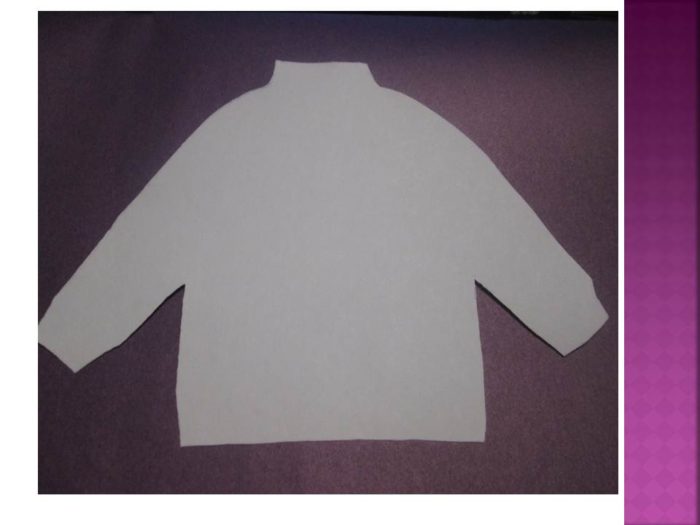
Blank templates will help you create a beautiful clothing gallery
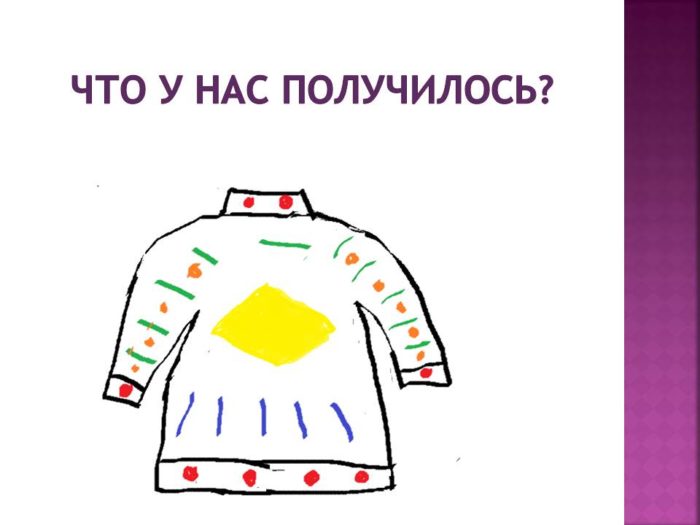
Young artists show their imagination
Summary of the drawing lesson “Decorating a Sweater”
Olga Pozhalueva
Summary of the drawing lesson “Decorating a Sweater”
“
Decorating a Sweater ” (middle group)
- Continue teaching children to draw with their fingers .
-To strengthen children’s ability to decorate items of clothing using strokes, dots, circles and other familiar elements.
— Develop aesthetic perception, independence, initiative.
Materials for the lesson . Sweaters cut out of thick paper , toys: hare, gouache, wet wipes.
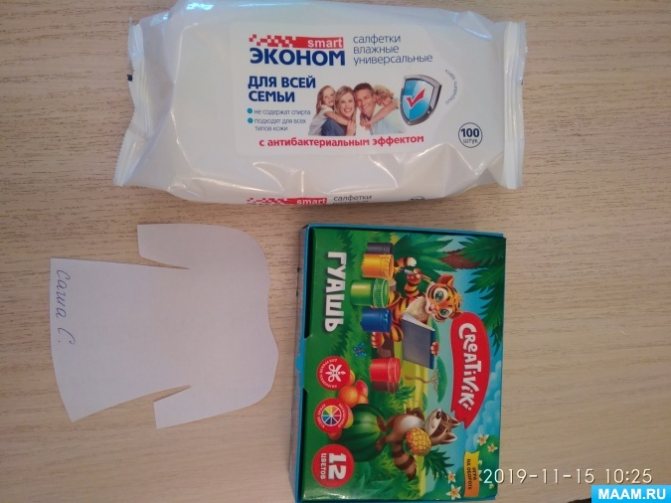
The procedure for completing work on the topic “Decorating a sweater.”
During the pedagogical demonstration, the teacher is recommended to show on the board or easel the drawing of the techniques named by the children, and then show an example of step-by-step drawing of a pattern on a sweater. You can look at examples of finished works on a given topic and invite the children to determine with what techniques these drawings were created and in what sequence.
Decoration with paper strips and pencil drawing.
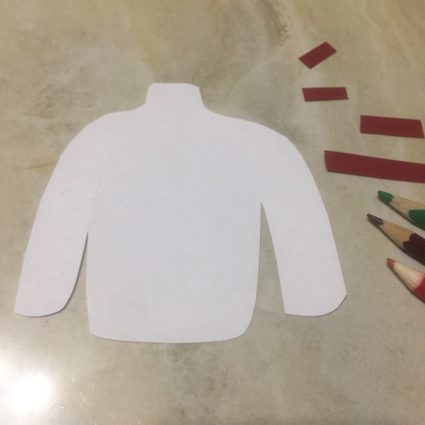
To decorate a sweater, paper strips are selected according to the size of the neck, cuffs, and elastic bands
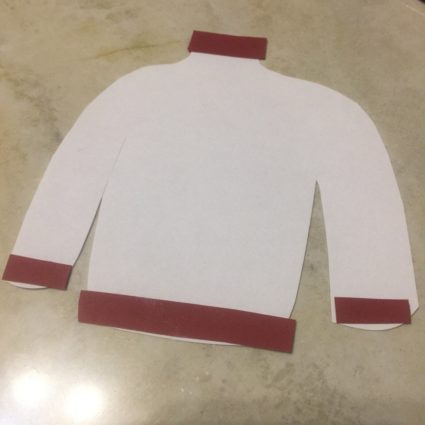
Gluing paper strips Draw vertical lines with a pencil

Alternating pencil lines on a sweater
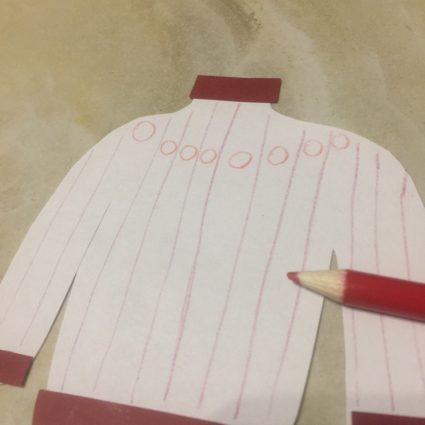
We draw rings in the shoulder area, placing them in a semicircle. Hatching the elements.
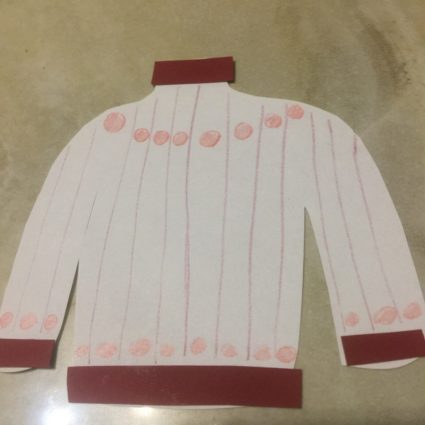
Draw rings along the bottom edge of the sweater and cuffs, paint over them with shading
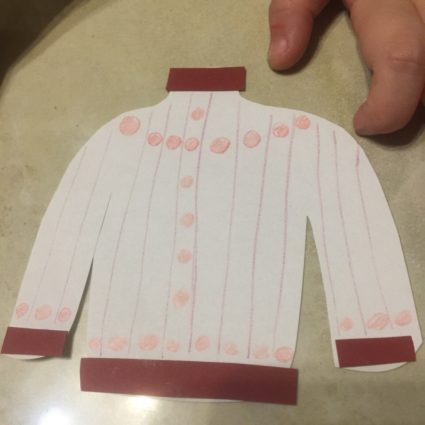
We draw similar elements along the central transverse line of the product
Drawing patterns with a pencil and decorating with plasticine elements.
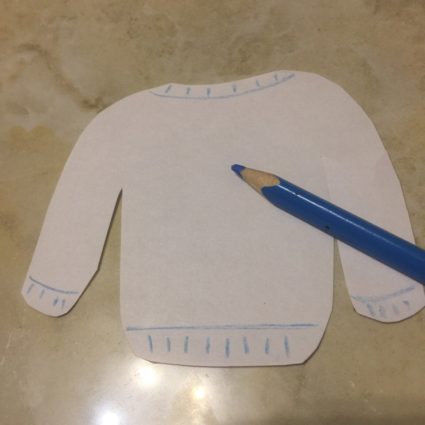
Designing the neckline, cuffs and elastic bands with pencil lines
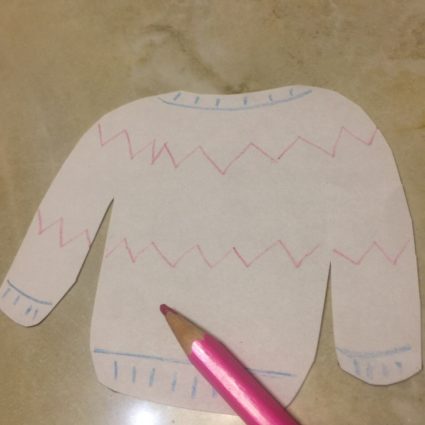
Drawing zigzag lines with a pink pencil
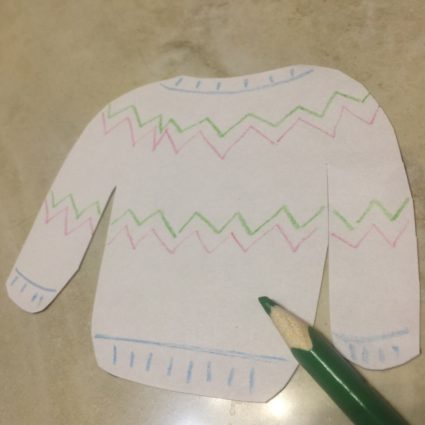
Drawing zigzag lines with a green pencil
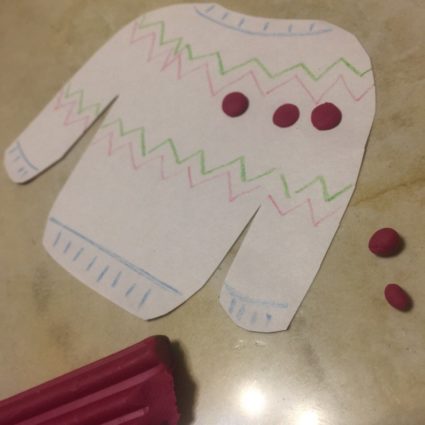
Rolling plasticine elements
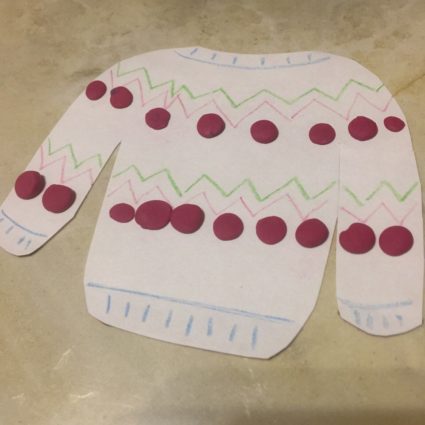
Attaching plasticine balls by flattening The process of decorating a sweater
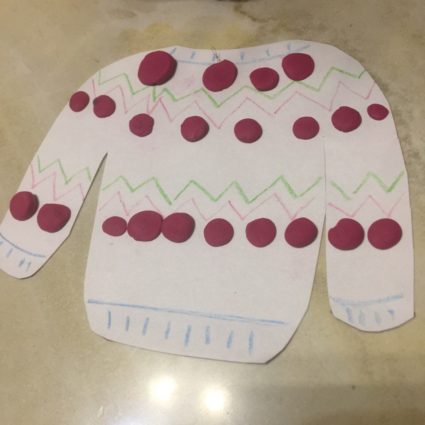
Finished work
Creating a pattern using a stroke.
Applying strokes of the same color diagonally
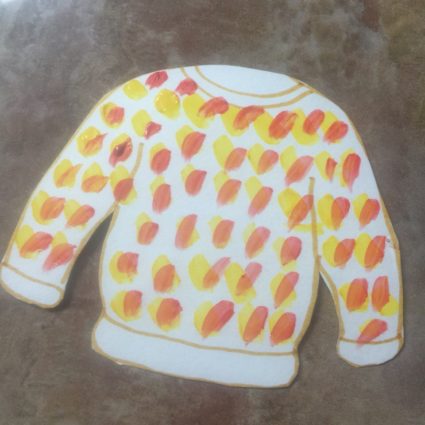
Applying strokes of a different color diagonally to mirror previously applied strokes
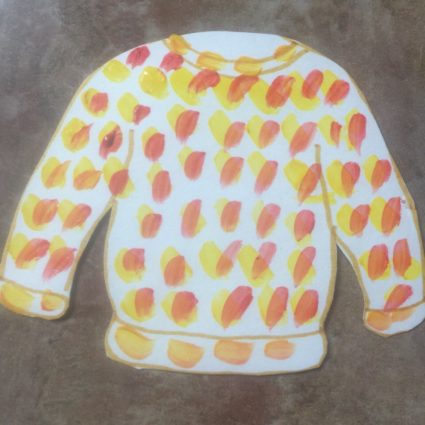
Decoration with strokes of the neckline, cuffs, elastic bands
Drawing a pattern using lines and dots.
Marking the neckline and cuffs with lines Designing the cuffs and neckline Drawing lines: alternating lines of different colors Drawing dots: rhythmic repetition
Drawing with watercolors: toning, lines and rings.
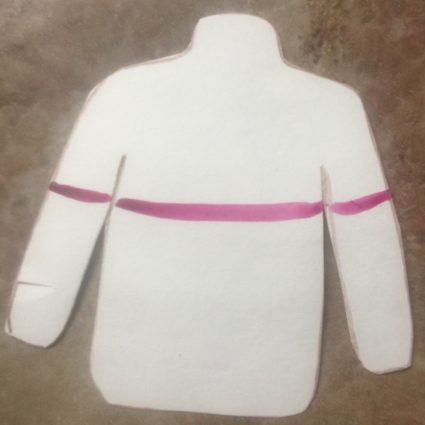
Dividing a workpiece with a horizontal line
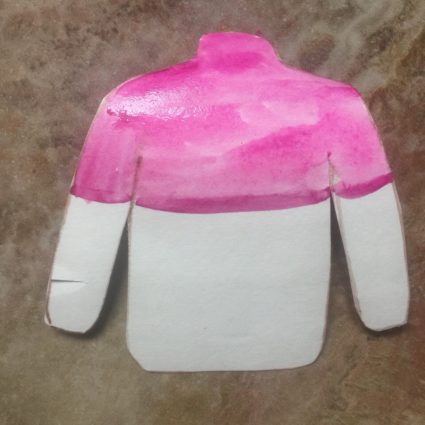
Toning the top of the sweater
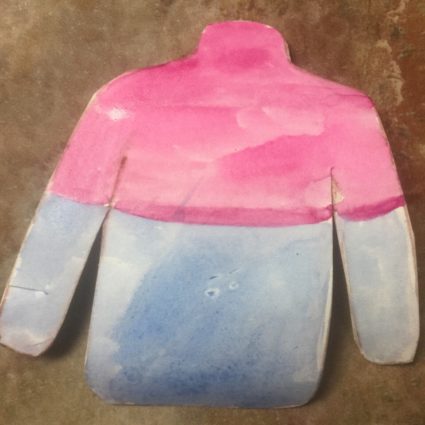
Tinting the bottom of the sweater and sleeves with a different color
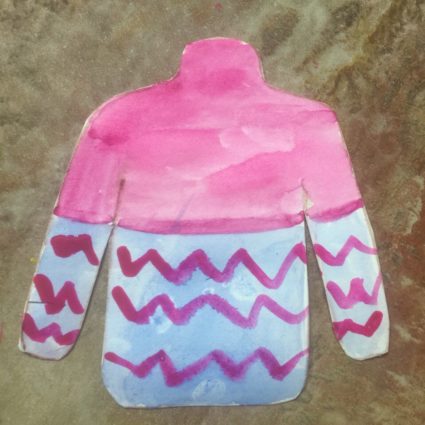
Drawing zigzag lines (alternating) Designing the neck of a sweater Drawing rings (alternating in a checkerboard pattern)
Drawing with gouache: circles and dots.

Marking of neckline, cuffs, elastic with lines
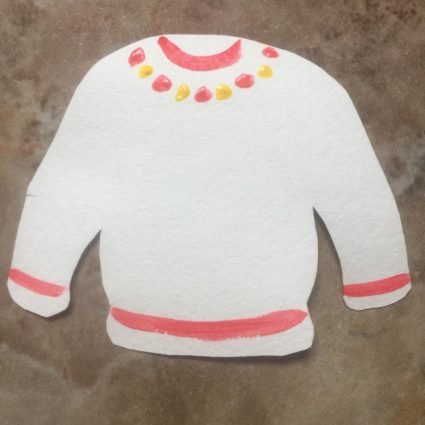
Drawing dots: alternating dots of two colors
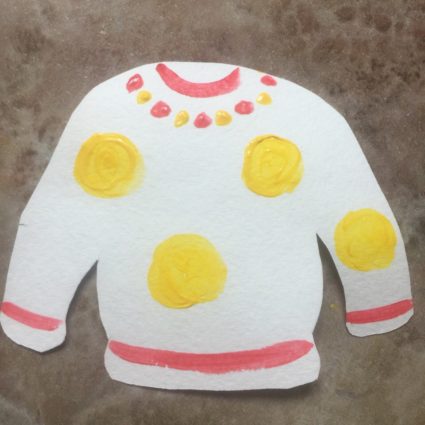
Drawing circles in a checkerboard pattern
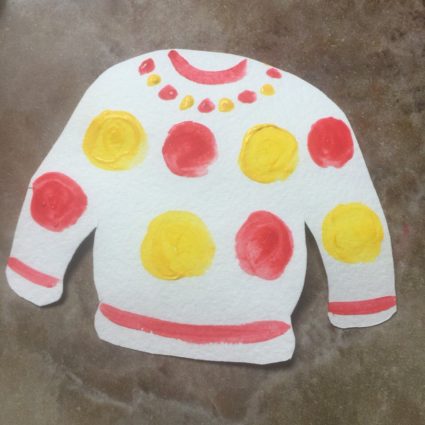
Drawing circles of a different color
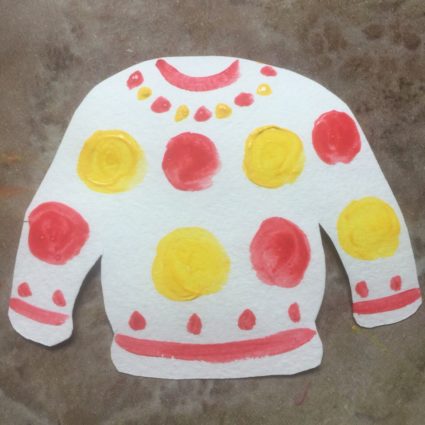
Drawing dots along the bottom edge of the sweater and sleeves Drawing dots of a second color
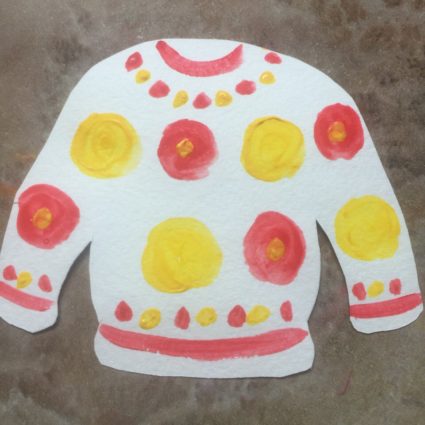
Drawing dots in the center of circles
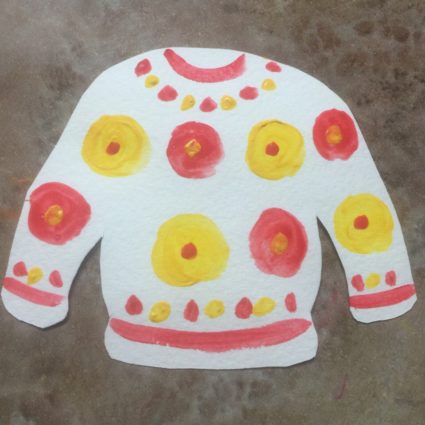
Finished work
“Winter patterns”: drawing lines and dots with gouache on a colored base.
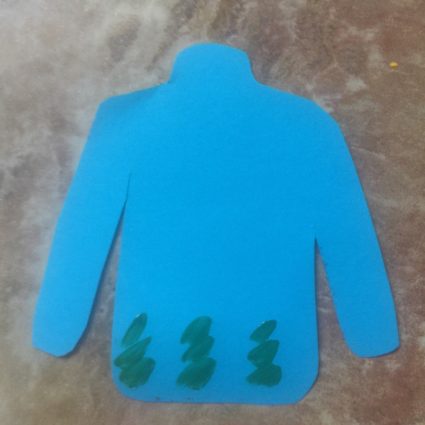
Let's start drawing Christmas trees at the bottom of the sweater: repeating diagonal lines Repeating diagonal lines in a mirror position
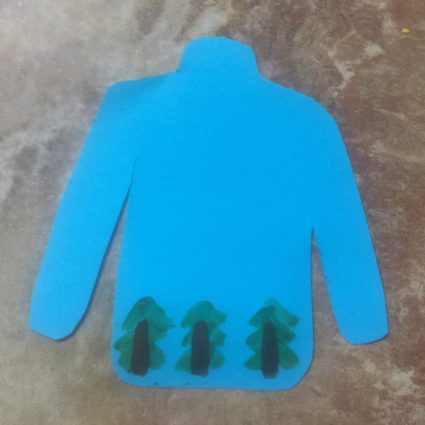
In the middle we denote the trunks of the Christmas trees with vertical lines. Draw the dots in a checkerboard pattern.
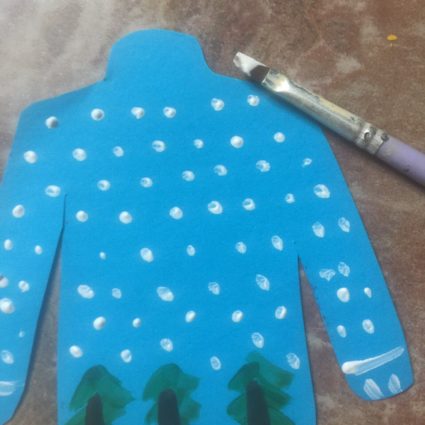
We design the cuffs, neckline and elastic band. Finished work
“Spring patterns”: lines, circles and dots in gouache on a colored basis.
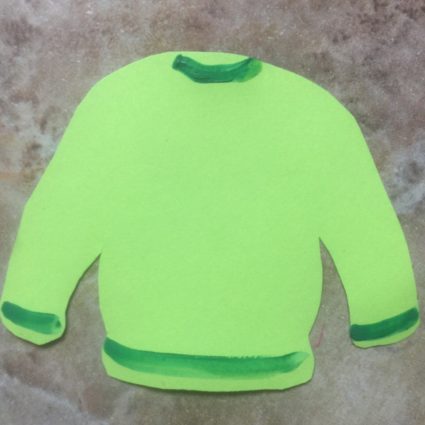
Marking of neckline, cuffs, elastic with lines
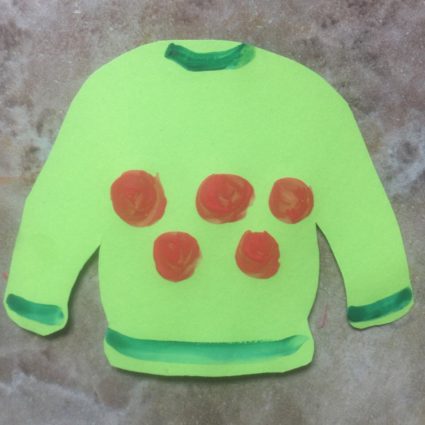
Drawing circles in the center of the workpiece in a checkerboard pattern Drawing vertical lines from the circles to the bottom edge
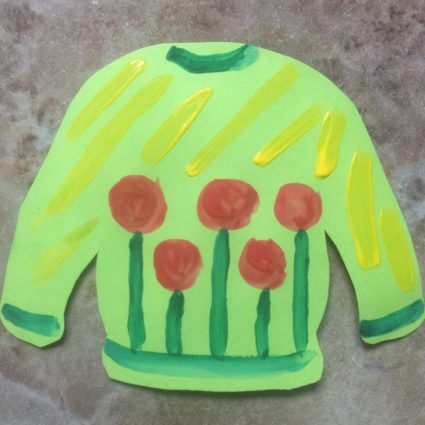
Drawing diagonal lines - sun rays
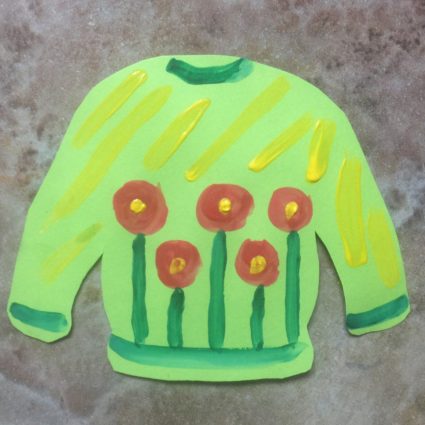
Drawing dots in the center of circles
“Summer patterns”: lines, circles, gouache strokes on a colored basis.
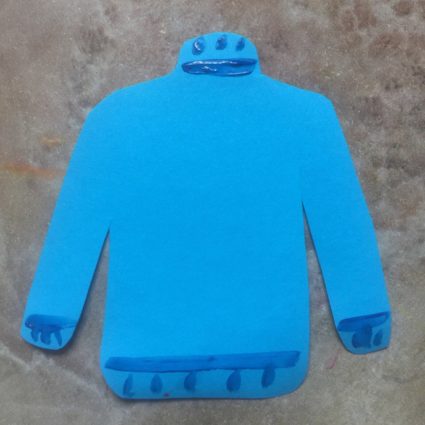
Drawing the neckline, cuffs and elastic with horizontal lines and vertical strokes Rhythmic repetition of horizontal wavy lines - the sea
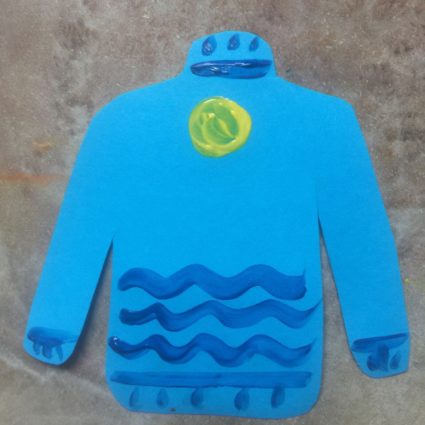
Circle at the top of the sweater by class=”aligncenter” width=”425″ height=”425″[/img] Drawing strokes to the sides of the circle - rays of the sun
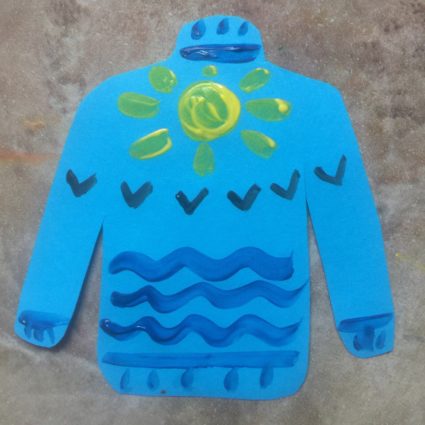
Rhythmic repetition of ticks - seagulls
Examples of finished works on the topic “Decorating a Sweater”.
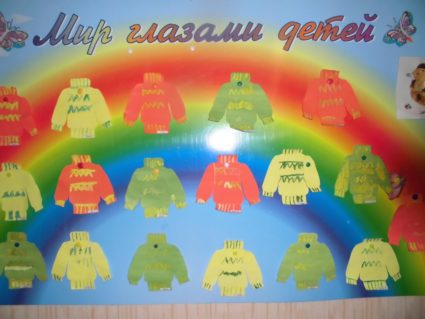
Exhibition of finished works Alternation of lines Alternation of lines
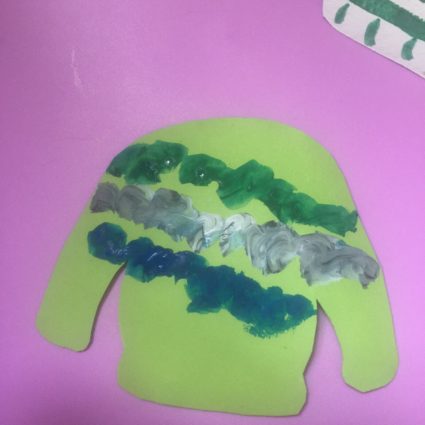
Repeat diagonal lines
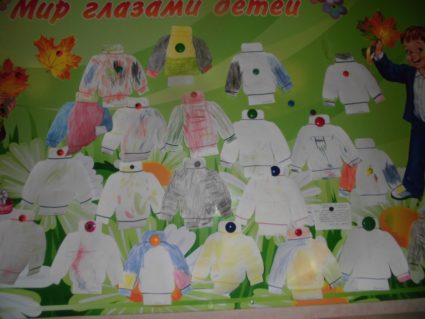
Exhibition of works Examples of works

Line pattern
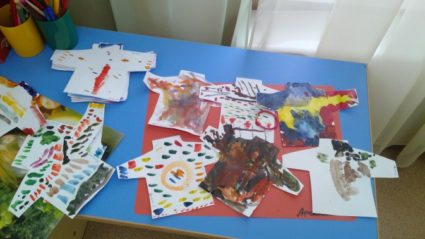
Examples of work Examples of work
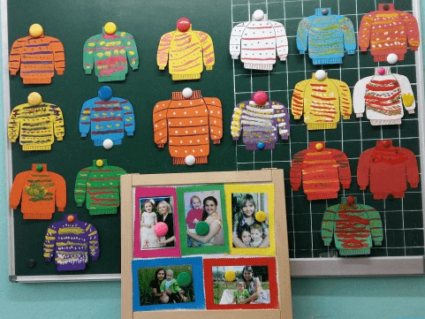
Exhibition of works for March 8 on the theme “Sweater for my beloved mother”
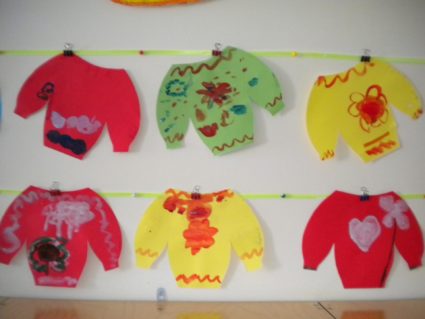
Work examples
Progress of the lesson:
Creating a problem situation:
The teacher brings Bunny into the group, who cries loudly.
The owner abandoned the bunny -
Bunny was left in the rain,
I couldn't get off the bench,
I was completely wet. (A. Barto)
Educator: Guys, what happened to Bunny (got wet in the rain)
.
Educator: The bunny got wet, his sweater became wet , the colors turned pale, the drawing on it was gone. How can you help Bunny? ( draw a pattern )
.Today we will
decorate a sweater with lines , dots, circles and other familiar elements; for this we will need paints of different colors.
Didactic exercise “Be attentive”
:
Red color - clap your hands
Blue color - hands up
Educator: You see, Bunny, how many bright colors we have. Guys, are you ready to help the bunny? Yes.
- Look, Bunny gave each of you a sweater , let's decorate them with paints . And so that our patterns turn out beautiful, we first warm up our fingers.
Once upon a time there was a bunny - (clap hands)
Long ears (three fingers in a fist, index and middle - ears)
.
The bunny is frozen (clench and unclench the fingers of both hands)
Nose on the edge (rubbing the nose)
.
Frostbitten nose (clench and unclench the fingers of both hands,
My tail is frozen (they wave their hand to imitate a tail)
.
And went to warm up (turn the steering wheel)
Visit the kids.
It’s warm and quiet there (they unclench the fists of both hands,
There is no wolf (clap hands,
Summary of a drawing lesson in the junior group “Decorating a Sweater”
Olga Volchenkova
Summary of a drawing lesson in the junior group “Decorating a Sweater”
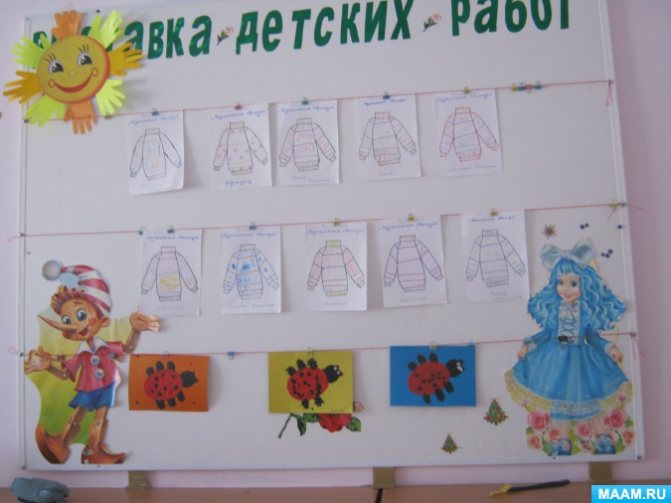
Summary of a drawing lesson in the junior group “Decorating a Sweater”
Tasks:
Educational:
Strengthen children's ability to decorate items of clothing using lines, strokes, circles and other familiar elements.
Educational:
Develop aesthetic perception, independence and initiative.
